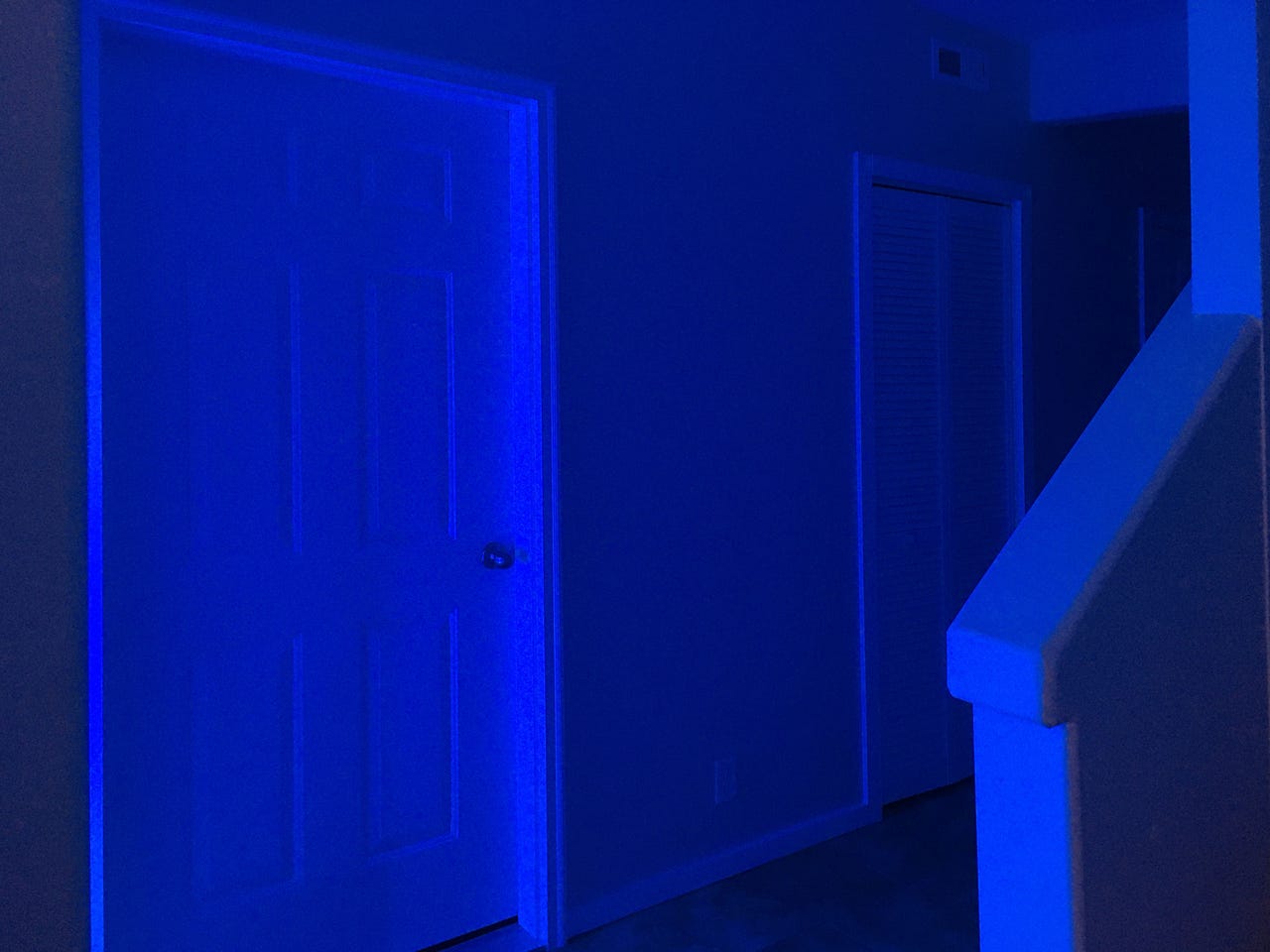
































This routine makes it easy to see while in the hallway, but the dark blue doesn't screw up night vision.
Last year, I wrote a review of the beautiful Govee Lyra light bar, and showed that it can be paired with a motion sensor. But I didn't really go into much detail about how to do it, and how to think about setting up smart home triggers and actions.
In this article, we'll do just that. We'll use theHue Motion Sensor as the sensor trigger, theLyra light bar as the device that takes action, and Alexa as both a voice trigger and control mechanism.
Also: This Alexa-controlled fan was the luxury I didn't know I needed
It's important to choose devices that will work with Alexa's routines. Routines are little mini-programs that control how smart devices behave.
Motion sensor:As a motion sensor, I chose theHue Motion Sensor . I picked it because it was one of the few motion sensors that uses AAA batteries, which means the sensor should be able to run for about two years without changing batteries. I don't like having to change batteries regularly on my smart devices. I prefer to set them up and just let them run. One downside is that the Hue Motion Sensor requires theHue Bridge , but since I already had one of those for my Hue bulbs, there wasn't any real barrier of entry.
Smart lights:My goal was to have lights go on and off in a particularly dark hallway. TheGovee Lyra was perfect for fitting into a corner and lighting up the space with a pretty blue hue. So that's what I chose to use.
Alexa:We have Alexa devices all through the house and have built our smart home infrastructure on top of them. So it made sense that we'd use the Alexa routines feature to drive this application as well.
Almost every smart home vendor has some sort of proprietary app to control their offerings. In most cases, before you can have Alexa control a device, it first has to be controlled by the vendor's app. I'm not going to go into much detail about either Hue's app or Govee's, because each vendors' app differs.
The key thing to note is you need to make sure you get an account (because there's an internet component to this), install the app, and configure your device to be controlled by that app. In the Hue app, I named my motion sensor "Hall Motion Sensor".
Once you've verified that the device can be controlled by its vendor's app, you can move on to the next step.
Alexa skills are like little add-on plugins for Alexa. While some skills teach Alexa tofart (installed more than 116,000 times) orburp (installed more than 1,400 times), other skills help youorder pizza or learnthe elements . The skills we're interested in, though, are the ones provided by smart device vendors to control their devices.
To find a skill, open your Alexa app, press the More icon on the bottom of the page, then choose Skills & Games from the menu. After that, hit the magnifying glass icon to search for a skill. In my case, I searched for Hue. Repeat this step and the next for Govee (and any other lights that need to be controlled).
Once you've searched and found the device vendor's skill, you'll want to link the skill. Most of the time, that involves hitting the Enable button and then logging in with the username and password you used when setting up an account with the vendor.
My Govee skill is already enabled in the Alexa app, as you can see in the screenshot below.
This is the core of the process. If Alexa skills are like plugins, routines are like actions -- little scripts that interact with Alexa and the plugin-controlled devices. Vendors write the skills that drive the devices, but you can easily set up a routine by choosing options on a form.
We're going to start by opening the Alexa app, pressing the More icon at the bottom of the screen, and then tapping Routines. To add a new routine, tap the plus sign at the upper right of the screen.
Below is the blank new routine screen. First, tapEnter routine name. We'll name ours Hallway Motion.
The trigger is the event that causes the routine to run. To define a trigger in Alexa, clickWhen this happenson the routine screen. You'll see a whole bunch of categories. For our motion sensor, choose Smart Home. Smart Home controls most of the smart home devices.
The Alexa app will present to you a list of devices that can act as triggers. These are the devices that were previously linked to Alexa as skills. In my case, I have three sensors, the Hue Motion Sensor, an Echo Show capable of detecting motion, and a temperature sensor named "Upstairs" because it's
 Tags quentes :
Casa Inteligente
Iluminação Inteligente
Tags quentes :
Casa Inteligente
Iluminação Inteligente